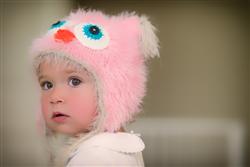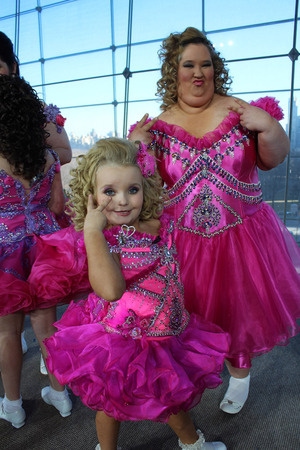Milk Exchange: Moms Share More Than Just Advice
By Guest Blogger Ashley Escue Herman
The words nursing mother tend to conjure images like those stock photos of a blissfully peaceful mom cuddling her adoring babe. In practice, nursing often looks a lot different- burp stains on shoulders, a child prodigy rehearsing her Cirque du Soleil audition, siblings interrupting- you get the picture. But I’d like to expand on the idea of nursing relationships beyond the physical act of breastfeeding. A parent can certainly enjoy the same kind of bonding while feeding a baby with a spoon, dropper, cup, or bottle. So, while it might stretch our way of thinking, I think it is important to acknowledge that nursing looks different for every family and every child. I certainly don’t begrudge any parent who chooses formula, but here I’d like to talk about a practice that is making a comeback- milk sharing.
My own first experience with milk sharing was probably in my teen years. I was helping a couple of young mothers with their small children while they visited. After nursing with her mother, one little girl then nursed from her mother’s friend. It was the most normal thing in the world at that moment and it stuck with me to adulthood. But while some moms are wet nurses, it is rare in our culture today. Still, more and more moms are sharing that liquid gold every day.
A lactating mom can donate through several avenues. Informal donation happens when a mom in need asks her friends for donations. Peer-to-Peer organizations like Eats on Feet and Human Milk for Human Babies use the power of social media to connect supply with demand, even without a real-life connection. Some Lactation Consultants also maintain a network of donor moms, and call on them when needs arise. These donations run risks, but also have fewer restrictions such as age of recipient child. Milk banks like WakeMed’s Mothers’ Milk Bank offer pre-screened and pasteurized breastmilk for both medically necessary and elective use with a prescription. Donors submit blood samples for screenings in addition to milk donations. MMB donations are limited to the first 12 postpartum months. Finally, a scan of Craigslist and other online yardsale sites shows a growing community of private, for-profit suppliers. Unlike donors in the other categories, who are typically given enough to cover the cost of pumping supplies like storage bags and extra pump parts, these women sell their milk as a business and may not place restrictions on use. For example, a growing number of bodybuilders and fitness buffs along with creative chefs are in search of breastmilk for adult consumption.
So how does a mom make sure she has enough to share? There are several ways a woman can increase her supply to feed two or more babies. Jamilla Walker, RN says that in her experience as a Certified Lactation Educator “a good routine including a pumping schedule and incorporating milk boosters into a mom’s diet works best. Pumping and feeding together whenever possible helps protect the supply without creating an oversupply issue. I find a lot of moms have difficulties remembering to take supplements or aren’t a fan of the teas. I also find these to be less effective than just adding things like oats and flaxseed to their diets. Most of the time, moms aren’t taking in enough calories, so adding supplements are less helpful than just good nursing habits for the baby and eating habits for the mom! I encourage moms to keep a batch of lactation cookies (see recipe below) on hand, or eat a bowl of steel cuts oats with ground flaxseed, peanut butter and chocolate chips as a bedtime snack.”
Some donors set a pumping schedule, daily goals, and keep detailed records of their milk in order to supply a baby regularly. Others pump when convenient and make occasional contributions, usually when the freezer is full. Often a donor volunteers for dietary restrictions such as dairy-free, gluten- free, or no spicy foods, to prevent digestive troubles in the recipients. This milk is typically in higher demand than that of a mother with no restrictions.
 Families may search for breastmilk for a wide variety of reasons. Adoption, premature birth, compromised health, formula ingredient intolerances, medications for the mother, or low supply are just a few. Regardless of why and how a family uses donor milk, it is a meaningful gift to share. If you are interested in donating or receiving milk, I encourage you to contact the organizations available to see which is right for you.
Families may search for breastmilk for a wide variety of reasons. Adoption, premature birth, compromised health, formula ingredient intolerances, medications for the mother, or low supply are just a few. Regardless of why and how a family uses donor milk, it is a meaningful gift to share. If you are interested in donating or receiving milk, I encourage you to contact the organizations available to see which is right for you.
Lactation Bars
~ 2 cups healthy fats- butter, nut butter, or coconut oil
~ 1 cup cane sugar
~ 2 cups brown sugar
~ 4 eggs
~ 1 TBS vanilla
~ 1 TSP salt
~ 2 TSP baking soda
~ 2 1/2 cups flour, white or whole wheat
~ 1/2 cup wheat germ
~ 1/4 cup brewer’s yeast
~ 1/4 cup flax meal
~ 4 cups oatmeal, any type except instant or quick cook
~ Mix-ins like chocolate chips, dried fruit, nuts
Cream the fats with the sugar until fluffy. Add vanilla and eggs until incorporated. Mix dry ingredients except oatmeal in separate bowl and add to egg mix in three batches. Mix well. Fold in oats and chocolate chips. Spread in lined or sprayed pan with sides. Bake for 20 mins at 350 until done. Allow to cool before cutting. Can also be scooped and baked as cookies. Test for doneness at 13 minutes for cookies.
*Top photo courtesy of KannePhoto, Bottom photo courtesy of Ken Sunshine Photography
**Today’s guest blogger, Ashley, was a recent Mom on the Move. Read her profile here.






